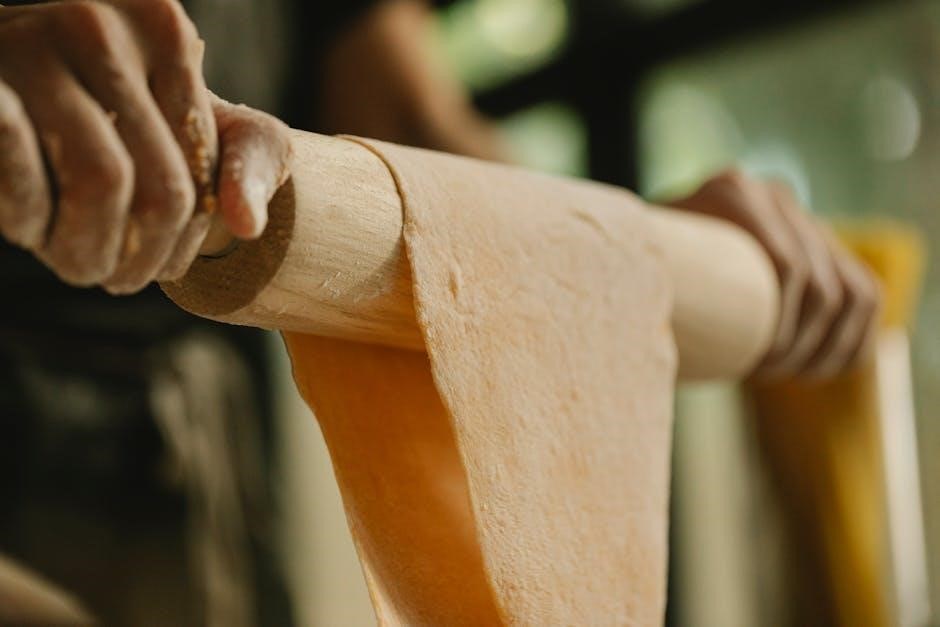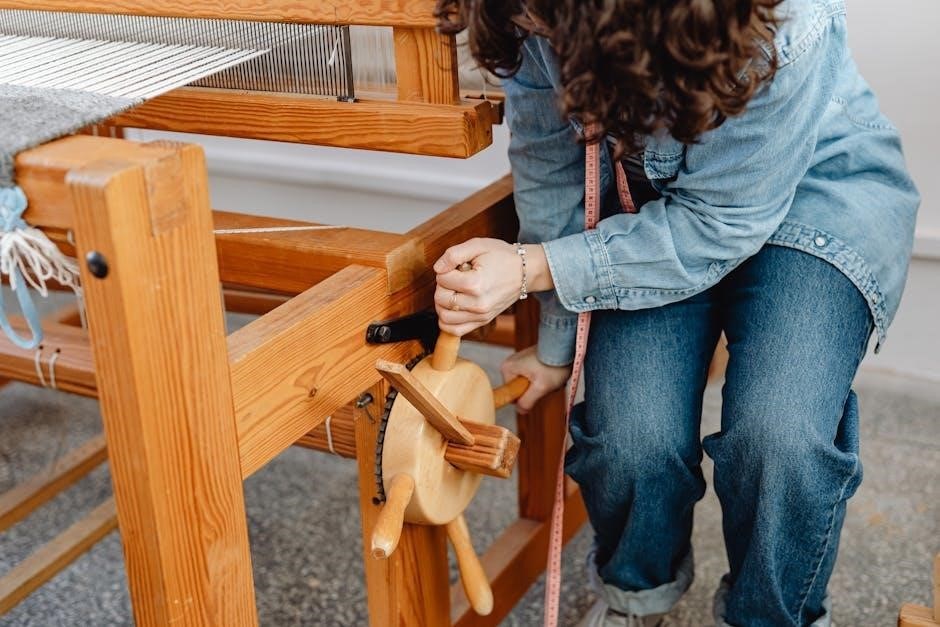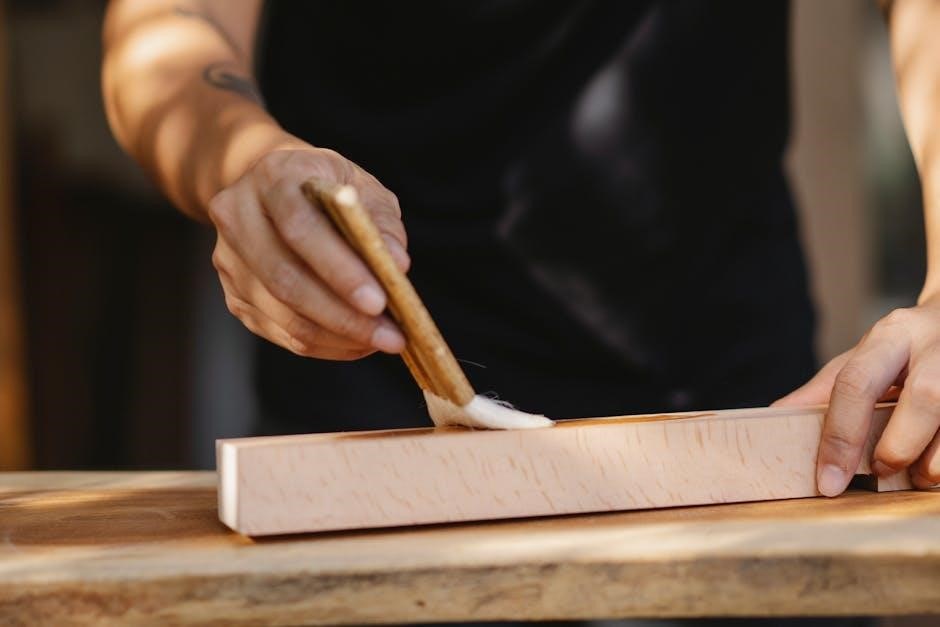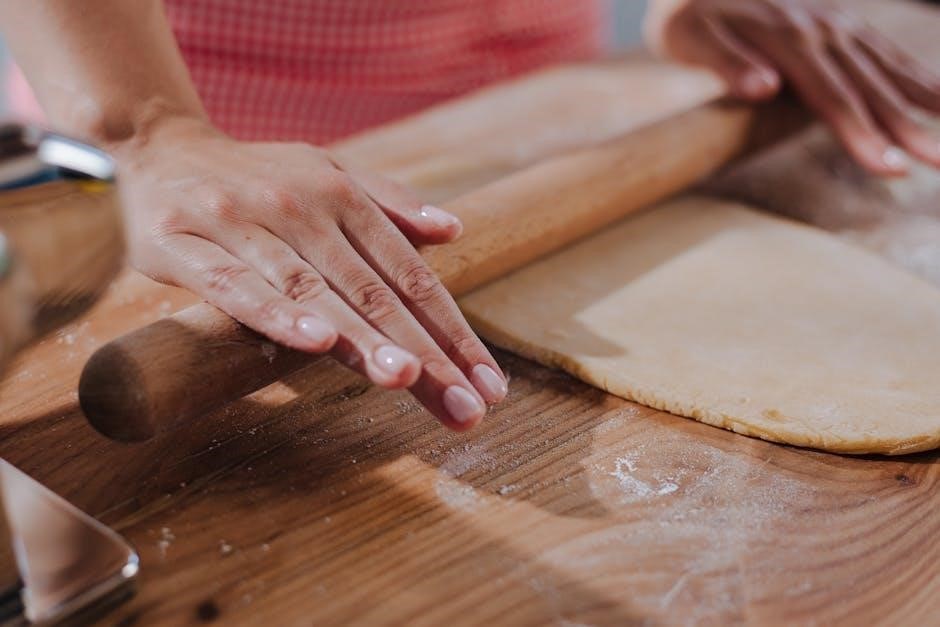manual bread maker
A manual bread maker is an essential appliance for home bakers, offering convenience and customization. It allows users to create fresh bread with controlled ingredients and settings, enhancing the home baking experience.
Overview of Manual Bread Makers
A manual bread maker is a versatile kitchen appliance designed to simplify the bread-making process. It combines functionality and convenience, allowing users to create fresh, homemade bread with ease. These devices typically feature programmable settings, delay timers, and crust control options, giving users flexibility in customizing their bread. Many models come with essential accessories like measuring cups, spoons, and recipe books, ensuring a seamless baking experience. Whether you’re a novice or an experienced baker, manual bread makers offer a practical way to enjoy freshly baked bread while maintaining control over ingredients and settings. They are a great addition to any kitchen, providing convenience and delicious results.
Why Choose a Manual Bread Maker
A manual bread maker is an excellent choice for those who value fresh, homemade bread with minimal effort. It offers precise control over ingredients, catering to dietary preferences like gluten-free or whole-grain options. With features such as delay timers and crust control, users can customize their baking experience. The appliance is cost-effective in the long run, as homemade bread is often cheaper than store-bought options. Additionally, it comes with accessories like measuring tools and recipe books, making it user-friendly for both novices and experienced bakers. Its compact design and ease of use make it a practical addition to any kitchen, ensuring fresh, high-quality bread whenever desired.

Benefits of Using a Manual Bread Maker
A manual bread maker offers control over ingredients, customization of recipes, and the convenience of fresh homemade bread with minimal effort, making it a rewarding kitchen appliance.
Health Benefits: Control Over Ingredients
Using a manual bread maker allows for complete control over ingredients, ensuring healthier bread options. Users can avoid preservatives and additives found in store-bought bread by selecting fresh, organic ingredients. This makes it ideal for those with dietary restrictions or preferences, such as gluten-free or low-sodium diets. Customization ensures that each loaf meets individual nutritional needs, promoting a healthier lifestyle. Additionally, the ability to monitor and adjust ingredients provides peace of mind for families, especially those with allergies or specific health requirements. This feature is a significant advantage for health-conscious bakers who value transparency and control in their food preparation.
Cost-Effectiveness: Long-Term Savings
Manual bread makers offer significant long-term savings by reducing reliance on store-bought bread. Homemade bread eliminates the cost of preservatives, packaging, and retail markups, making it more economical. Over time, the initial investment in a bread maker pays off as families save money on bread purchases. Additionally, bulk ingredients like flour and yeast are cheaper than pre-made loaves, further cutting costs. This appliance is a practical choice for budget-conscious households, providing fresh, high-quality bread without the premium price of artisanal or specialty options. The savings add up, making a manual bread maker a cost-effective addition to any kitchen.
Customization: Tailor Recipes to Your Taste
Manual bread makers empower users to tailor recipes to their preferences, offering unparalleled customization. With adjustable settings for crust color, yeast activation, and dough consistency, bakers can craft bread that suits their taste. The ability to experiment with diverse ingredients, such as whole wheat, rye, or gluten-free flours, allows for personalized creations. Users can also add nuts, seeds, herbs, or spices to create unique flavor profiles. Additionally, the delay timer enables fresh bread to be ready at any time, ensuring convenience without compromising on customization. This flexibility makes manual bread makers ideal for those who enjoy experimenting with recipes or replicating favorite bread types from around the world.

Key Features of Manual Bread Makers
Manual bread makers offer essential features like adjustable capacity, delay timers, and crust control, ensuring versatility and convenience for homemade bread preparation.
Capacity: Size Options for Different Needs
Manual bread makers offer various capacities to suit different household needs. Smaller units are ideal for singles or couples, producing loaves around 500g. Larger models can handle up to 1kg, perfect for families. Some premium machines even offer 1.5kg capacity, catering to bigger families or for those who enjoy baking in bulk. Adjustable settings allow users to customize loaf size, ensuring the perfect fit for any requirement; This versatility makes manual bread makers a practical choice for a wide range of bakers, from beginners to experienced enthusiasts. The right capacity ensures efficient use of ingredients and energy, optimizing the baking process.
Delay Timer: Bake Fresh Bread Anytime
The delay timer on manual bread makers allows users to schedule baking up to 24 hours in advance. Simply add ingredients and set the timer to enjoy freshly baked bread in the morning or upon returning home. This feature is particularly convenient for busy households, as it ensures fresh bread without constant monitoring. The timer works in increments of 10 minutes, providing precise control over baking schedules. Once the program is complete, the machine automatically switches to a keep-warm setting for up to an hour, keeping the bread at the perfect temperature until serving. This functionality enhances user flexibility and convenience, making manual bread makers a practical and efficient addition to any kitchen.
Crust Control: Choose Your Desired Crust Color
Manual bread makers often feature a crust control option, allowing users to select their preferred crust color—light, medium, or dark. This feature ensures the bread is baked to your exact preference, enhancing texture and flavor. The crust setting adjusts the baking temperature and time during the final stages of the cycle. Lighter crusts are ideal for delicate breads, while darker crusts suit heartier loaves. This customization option adds versatility, catering to various recipes and personal tastes. Users appreciate the ability to tailor their bread’s appearance and texture, making each batch uniquely satisfying. Crust control is a standout feature that elevates the baking experience, ensuring every loaf meets your expectations.

How to Use a Manual Bread Maker
Using a manual bread maker involves selecting the desired program, adding ingredients, and setting the timer. It simplifies the bread-making process, ensuring consistent results every time.
Step-by-Step Guide to Making Bread
Using a manual bread maker is straightforward. Start by measuring ingredients precisely, adding them to the bread pan in the recommended order: liquids, dry ingredients, and yeast. Select the desired program and crust color, then set the delay timer if needed. Press Start to begin the cycle. The machine will mix, knead, rise, and bake the dough. Once the cycle completes, remove the bread and let it cool before slicing. Always refer to the manual for specific settings and tips to ensure perfect results. This process ensures fresh, homemade bread with minimal effort and customization.
Basic Recipe for Manual Bread Makers
A simple bread recipe for manual bread makers includes 2 cups of bread flour, 1 teaspoon of salt, 1 teaspoon of sugar, 1 packet of active dry yeast, and 1 cup of warm water. Add ingredients to the bread pan in the order recommended by your machine: liquids first, followed by dry ingredients, with yeast on top. Select the basic bread program and choose your preferred crust color. Start the machine and let it handle the mixing, kneading, rising, and baking. For best results, ensure all measurements are precise and refer to your manual for specific settings. This recipe yields a classic, delicious loaf perfect for beginners.
Maintenance and Care
Regularly clean the bread maker, including the bread pan and crusty lid. Store it in a dry place, ensuring all parts are completely dry after cleaning.
Cleaning Tips for Your Manual Bread Maker
Regular cleaning is essential to maintain your manual bread maker’s performance. Always unplug the appliance before cleaning. Use a damp cloth to wipe down the exterior and remove any dough or bread residue. The bread pan and lid should be washed with warm, soapy water after each use. Avoid using abrasive cleaners or scrubbers, as they may damage the non-stick surfaces. For tough crumbs, soak the pan in warm water before scrubbing gently. Dry all parts thoroughly to prevent rust or mold. Clean the interior periodically with a damp cloth, paying attention to crevices where dough may accumulate. Proper maintenance ensures longevity and optimal baking results.
Storage and Longevity of the Appliance
Proper storage is crucial for maintaining the longevity of your manual bread maker. After cleaning, ensure the appliance is completely dry before storing it in a cool, dry place. Avoid exposing it to direct sunlight or moisture, as this can damage electrical components. Store the bread pan and accessories separately in a protective cover or bag to prevent dust accumulation. Regularly inspect the appliance for signs of wear and tear. If not using the bread maker for an extended period, consider unplugging it and storing it in its original packaging or a sturdy box. Follow the manufacturer’s guidelines for storage to ensure optimal performance and extend the appliance’s lifespan.

Safety Precautions
Always follow safety guidelines when using a manual bread maker. Avoid touching hot surfaces, keep children away, and ensure the appliance is placed on a stable surface. Read the manual carefully before first use and follow all precautions to prevent accidents and ensure safe operation.
Important Safety Tips for Users
When using a manual bread maker, it’s crucial to follow essential safety tips to ensure a hazard-free experience. Always read the instruction manual thoroughly before first use to understand the appliance’s operations and safety features. Avoid touching hot surfaces, as they can cause burns. Keep the bread maker out of reach of children to prevent accidental injuries. Never submerge the appliance in water or expose it to excessive moisture to avoid electrical hazards. Ensure the bread maker is placed on a stable, heat-resistant surface during operation. Regularly inspect the power cord and plug for damage, and unplug the device when not in use. By adhering to these guidelines, users can enjoy safe and efficient bread making at home. Additionally, always follow the manufacturer’s specific safety recommendations for your particular model to maximize safety and appliance longevity.
Troubleshooting Common Issues
Common issues with manual bread makers can often be resolved with simple troubleshooting. If the bread doesn’t bake evenly, check the alignment of the bread pan and ensure proper loaf size. For crust color inconsistencies, adjust the crust control settings or verify the oven temperature. If the machine stops mid-cycle, ensure it’s properly plugged in and the power cord is secure. Loose connections or faulty mechanisms may require consulting the manual or contacting customer support. To address uneven mixing, ensure ingredients are loaded correctly and the dough is evenly distributed. Regular cleaning and maintenance can prevent many operational issues, ensuring consistent results. Always refer to the user manual for specific solutions tailored to your model.
Manual bread makers offer a satisfying way to bake fresh, customizable bread at home, empowering users to create wholesome loaves with ease and delicious results always.
Final Thoughts on Manual Bread Makers
Manual bread makers are a fantastic investment for any home baker, offering unparalleled control over ingredients and baking processes. They provide a cost-effective solution, allowing users to create fresh, healthy bread without preservatives. With various features like delay timers and crust control, these appliances cater to diverse preferences. Their compact design and ease of use make them a practical addition to any kitchen. By enabling users to experiment with recipes and customize flavors, manual bread makers not only save money but also foster a sense of creativity and satisfaction. They are a worthwhile choice for anyone looking to enjoy homemade bread effortlessly.
Encouragement to Start Baking
Embrace the joy of homemade bread making with a manual bread maker! It’s an excellent way to explore your creativity and enjoy fresh, healthy bread. Perfect for beginners and experienced bakers alike, these appliances simplify the process, making it easy to create delicious loaves. Start with basic recipes and gradually experiment with new ingredients and flavors. The satisfaction of baking your own bread is rewarding and fun. With a manual bread maker, you can produce high-quality bread at home, saving money and enjoying the process. Take the first step today and discover the endless possibilities of homemade bread making with ease and confidence.
